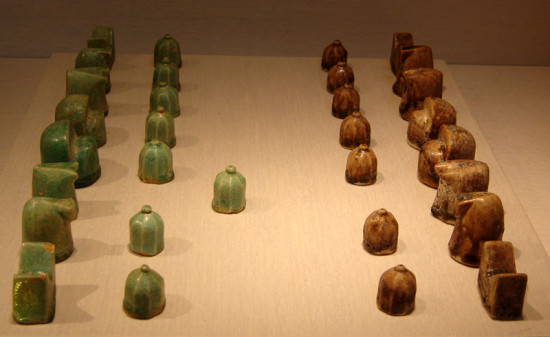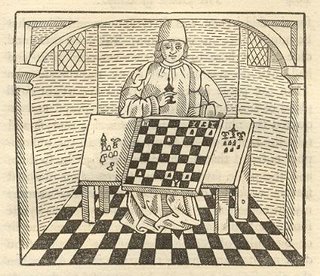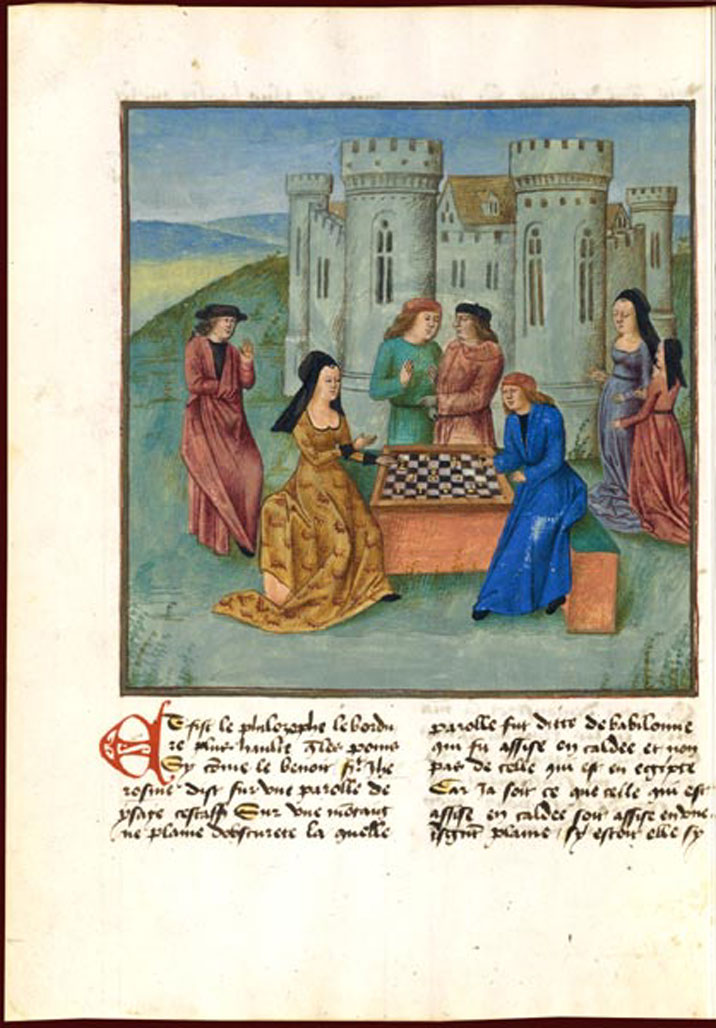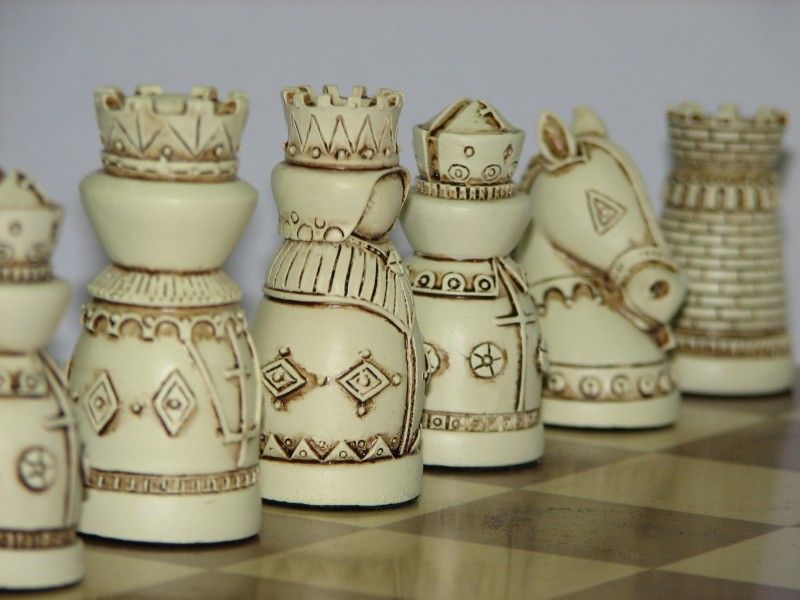Back to Chess: Origins and Myth...

Above is the Persian version of chess, shatranj. Note how the game pieces are simplified to simple geometric forms - meant to temper the symbolic meaning. Original Indian pieces featured kings like ours, and thus the subject has always been the same. However, Islamic chess brought chess to its purest and most competitive form. Arguably, lacking in uniformity of physicality, the game gained uniformity of purpose - a warrior mentality.


Chess is ubiquitous in the Middle Ages, but the images may seem contradictory. On the left is the solitary chess player, one who does not "play" chess but rather studies it for its virtues. This is the tinkerer who gets to be king for a day and imagine a brilliant society. On the right is instead a medieval party. Even guys played against girls! I would argue that this is where chess caught on as a cultural form. Chess became "cool" and soon its imagery of grids and pieces would become ubiquitous. We might not play chess "for fun" to a great extent, but we recognize it as a game for the great ones to play and to be amazed by.

The pieces are complete in symbolism and decoration by the Middle Ages. The pieces are faceless and yet at the same time symbolic of power, having ornamentation befitting their place in society.
On to Chess: We're All Pawns...
